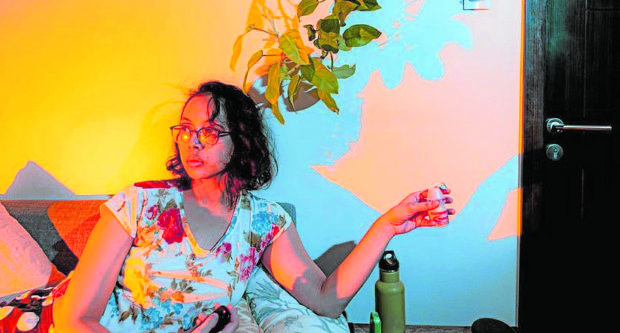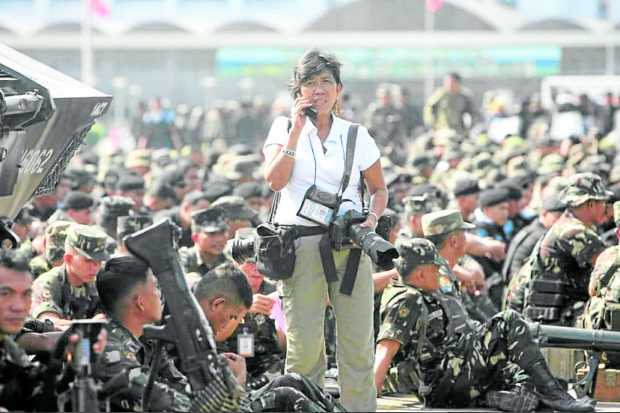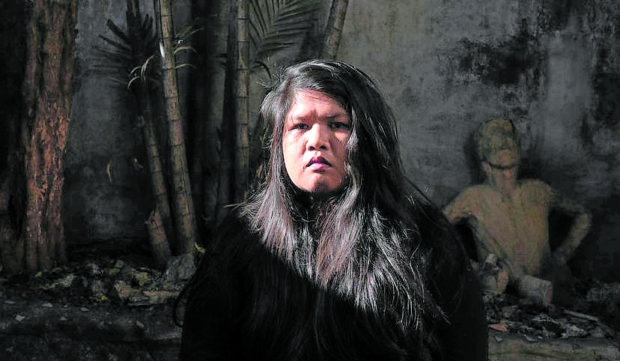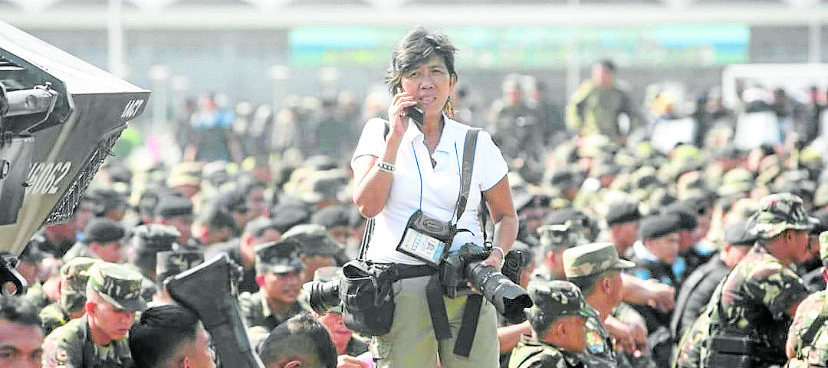In a photo of herself uploaded on Facebook, veteran news photographer Joan Bondoc has scribbled black lines over the logo of her camera strap.
Bondoc, who has been a photographer for almost 30 years, recalled that she was once asked what she was doing in a man’s world. But she continued to carry her heavy equipment and work her way through many assignments.
“The women who work side-by-side with their male counterparts, their photographs speak of their capabilities,” she said.
But Bondoc, like many photographers, expressed disappointment this week after Canon Philippines revealed an all-male lineup for its “Crusaders of Light” campaign. The 11 ambassadors were men whose works focused on filmmaking, advertising, weddings, sports, travel, fashion and photojournalism.
Even Miss Universe 2015 Pia Wurtzbach, along with other social media users, wondered why there was no room for inclusivity.

“It is sad that it turns out, until now, there are big companies that do not recognize female photographers,” Bondoc said.
Canon has since issued a statement, saying that their brand “supports camera enthusiasts and content creators regardless of their gender.” But more backlash followed as people online said that the company did not apologize for its mistake.
A male fashion photographer, who asked that his name be withheld, said that it is 2021, and a recognizable company such as Canon should not ignore the women who make up their clientele and excel in the field of photography.
“The fashion industry is predominantly run by women—there are female creatives and LGBTQIA creatives. They are really good at what they do and they deserve all the credit and equality,” he said.
“Canon messed up,” the fashion photographer added.
Tokenism
Kimberly dela Cruz, a freelance photographer whose work has appeared in The New York Times, started her professional career in the Inquirer newsroom in 2013.
It was not hard to blend in with the team or prove that she could cover, because there were other veteran photographers she could look up to in the team like Bondoc, Lyn Rillon, Marianne Bermudez and Alanah Torralba.
But the field was more challenging, she said, as many people had different expectations of how she should act, and many had notions of how she should do her job.
“Everyone will tell you how to do your job. Even if I achieve something, they would assume it’s either luck or diversity. It’s never about my achievements as my own. There’s always a ‘but’ to it. Like ‘She’s good, but she’s opinionated,’” she added.

Since joining the photography field eight years ago, Dela Cruz said that she has seen improvements, as more and more people are talking about inclusivity. But she added that mere tokenism and shallow acknowledgment of issues in the industry should not be used as a shield to absolve any systematically problematic actions in the past.
“I think for a major brand to not have women ambassadors just shows how companies choose to ignore the existence of women and nonbinary photographers,” Dela Cruz said. “It’s time for everyone, not just camera brands, to acknowledge it. The burden of having representation should fall on the companies and institutions. We exist, we’re as capable as men, and our voices matter, too. They should hire us, not just flaunt us during Women’s Month or whenever they want to seem progressive and inclusive. We are not tokens, we are professionals. We are as good as them, so why does it feel that we still have to remind them that we exist?”
Not the first time
Sandra Dans, who works as a wedding photographer and also teaches photography, said that the gender issue is not isolated to the industry, but has been pervasive in many fields.
Dans noted that this is not the first time that women photographers have been overlooked by camera manufacturers. In 2017, Nikon featured an all-male ambassador lineup, drawing backlash from photographers.
“It also points to, who are they valuing? Who is part of your market?” Dans said.

Dans started in 2010 as a wedding photographer. After taking a break, she started Off Kilter, a studio whose philosophy is “smash the patriarchy with your crush.”
“Part of what made me uncomfortable shooting weddings in the beginning was the realization that a lot of the visual language used in traditional wedding photography comes from a very male-centric perspective,” she said. “It’s not obvious because a lot of wedding photography focuses on the bride, but the narrative of purity and angelic beauty is typically aimed at satisfying the male gaze. For some people, that’s what they want, and that’s totally fine, but not everyone lives in a heterosexual fairytale.”
Despite the Canon gaffe, Dans said that, in her opinion, women do not need the validation of Canon to be good photographers.
“Personally I don’t need them to tell me that my gender can take photos. Their validation is not what is important. It’s really more about them and more about what they think about these women,” Dans said. INQ













































